Last week’s suicide attack in Yemen, the first of its kind against Western tourists, demonstrated Al-Qaeda ever-present threat in this impoverished nation despite, sofar futile efforts to crush the terrorists. Yemeni officials have blamed the suicide bombing at an archaeological site in the eastern province of Marib which killed seven Spanish tourists and two locals, on Osama bin Laden’s notorious global terror network.
Yemen has been plagued by frequent kidnappings of Westerners, although all but one have been carried out by tribes with grievances against the central government and most hostages have been released unharmed. Extremists targeted oil facilities in Yemen in September last year and in March 2003 when a Canadian was killed and another wounded at an oil field east of Sana’a. But the deadliest in a series of attacks blamed on Al-Qaeda was in 2000, when the destroyer USS Cole was bombed off the southern port of Aden, killing 17 US sailors.
Although Al-Qaeda did not claim responsibility for Monday’s attack, all fingers have been pointing at the global terror network, or groups inspired by its ideology. “We vow to pursue jihad (holy war) as long as the crusaders continue to roam our country and the tyrants continue to provide them with moral and material support,” a statement by Al-Qaeda’s Yemen organization posted on the internet four days before the bombing, warned.

 Local intelligence claim that last Monday’s brutal attack was apparently masterminded by Al-Qaeda militants still on the run after escaping from a Sana’a prison in February last year. One of those still at large is Jamal Ahmad al-Badawi, who was convicted and sentenced to death for the USS Cole blast. Badawi is featured high on the US list of most-wanted terrorists with a five-million-dollar bounty on his head. Another fugitive is Fawzi al-Wajeh, a bodyguard of Osama bin Laden‘s, who was convicted in the 2002 bombing of a French oil tanker and was one of 23 al-Qaeda men to escape from a Yemeni high security prison last year. The US CIA has hunted al Qaeda terrorist leaders in its rare, but widely publicized targeted killing in Yemen. In November 2002, a U.S. Predator drone airplane killed the Yemeni al-Qaeda leader, Abdul Ali al-Harithi, with a missile, the first official attempt by the organization.
Local intelligence claim that last Monday’s brutal attack was apparently masterminded by Al-Qaeda militants still on the run after escaping from a Sana’a prison in February last year. One of those still at large is Jamal Ahmad al-Badawi, who was convicted and sentenced to death for the USS Cole blast. Badawi is featured high on the US list of most-wanted terrorists with a five-million-dollar bounty on his head. Another fugitive is Fawzi al-Wajeh, a bodyguard of Osama bin Laden‘s, who was convicted in the 2002 bombing of a French oil tanker and was one of 23 al-Qaeda men to escape from a Yemeni high security prison last year. The US CIA has hunted al Qaeda terrorist leaders in its rare, but widely publicized targeted killing in Yemen. In November 2002, a U.S. Predator drone airplane killed the Yemeni al-Qaeda leader, Abdul Ali al-Harithi, with a missile, the first official attempt by the organization.
 President Ali Abdullah Saleh‘s government considers itself to be cooperating with the West in the war against Islamic extremists, but it also has a history of close association with hardline Islamists, including Sheik Abd al-Majid al-Zindani, whom the U.S. has called “a specially designated global terrorist.” Al-Zindani‘s al-Imam University in Sana‘a is believed to finance al-Qaeda and recruit fighters for terrorist attacks. Al Zindani is also often described by anti-terrorist grouped as bin Laden‘s religious mentor.
President Ali Abdullah Saleh‘s government considers itself to be cooperating with the West in the war against Islamic extremists, but it also has a history of close association with hardline Islamists, including Sheik Abd al-Majid al-Zindani, whom the U.S. has called “a specially designated global terrorist.” Al-Zindani‘s al-Imam University in Sana‘a is believed to finance al-Qaeda and recruit fighters for terrorist attacks. Al Zindani is also often described by anti-terrorist grouped as bin Laden‘s religious mentor.
In fact, Yemen remains a fertile recruiting ground for groups fighting the West elsewhere in the Middle East. Recruiters grant selected militants the equivalent of about $1,300 to join anti-US factions in Iraq, Yemen‘s Interior Minister Al-Alimi said in an interview. Ali Mohammed al-Kurdi freely acknowledged that he used to dispatch young warriors to Iraq. freely acknowledged that he used to dispatch young warriors to Iraq. “One of them carried out a suicide bombing in Baghdad in 2005 and another carried out a suicide bombing near Abu Ghraib prison,” al-Kurdi said with the pride of a teacher speaking of his students, showing no trace of regret for the blood he helped to spill.
But there is much more in stake than Al Qaeda’s build-up in Yemen. United States intelligence suspected that a Shi’ite 2004 rebellion in the remote mountains of northwest Yemen has created suspicions that Iran may be attempting to open a new anti-American front to weaken U.S. efforts in the region.
The Zaidi Shi’a in Yemen
The Zaidi (or Zaiyi) are considered originally descendants of the Prophet Mohammed, who used to reside in what is now currently modern day Saudi Arabia. The Zaidi family name begins with the son of Imam Zain-Al-Abideen. He was the Prophet’s great-grandson and his son’s name was Zaid. Yemen’s Zaidi Shi’ites are well known for passionate loyalty to their Imams (traditional dual religious/political leaders) but have been regarded as moderate in their practice of Islam. With the reported growth of the rabidly anti-Shi’ite Al-Qaeda organization in Yemen, it has been suggested that Iran may already intervene in support of the Zaidi Shi’a. In the past, Sunni veterans of the anti-Soviet jihad in Afghanistan were used to control any resurgence of the Zaidi Shi’a, from whom the old royal family was drawn. Zaidi Shi’ism is one of three main branches of the Shi’a movement, together with “Twelver Shi’ism” and the Isma’ili branch. Unlike the other branches, the Zaidis are restricted almost solely to the Yemen area. Their form of Shari’a law follows the Sunni Hanafi school, which has aided in their integration with the Yemeni Sunnis. The Zaidi Imams ruled Yemen from the ninth century until 1962, with interruptions. The Shi’a represents roughly 40% of Yemen’s 20 million people.
The Zaidi rebellion first erupted in 2004 after rebels began attacking army positions across the north of the state. The rebels—who called for the restoration the Zaidi imamate, which ruled the capital, Sana’a, until a 1962 coup by republican force regard the Saleh regime as illegitimate. The group took up positions in the mountains and has been able to inflict significant damage on the Yemeni army and undermine its control in the north. The conflict also assumed a regional dynamic as Saleh accused Iran of sponsoring the rebellion as part of its expanding effort to project its power across the region.
Since fighting began in 2004, the totality of Zaidism has been under attack. The Yemeni regime has prohibited some mainstream Zaidi religious literature, replaced Zaidi preachers with Salafis at gunpoint and even banned some Zaidi religious festivals. This caused considerable outrage among the believers.
 The 2004 Saada uprising had a more traditional character than most of the modern Islamist militant organizations, which are led largely by military veterans and professionals such as doctors and engineers. The three month mountain revolt was led by a Zaidi religious figure, Hussein al-Houthi, leading a student movement committed to Islamic reform, the Shabab al-Mu’mineen, (“The Young Believers”). For some time, Al-Houthi was even a member of Yemen’s parliament (1993-97). Unconnected to the mainstream of Sunni radicalism, al-Houthi proved a fierce opponent of al-Qaeda, which had cemented its anti-Shi’ite reputation by participating in the 2001 Taliban’s massacres of Afghan Shi’ites. Like the Sunni militants, however, al-Houthi’s most scathing invective was reserved against America and Israel.
The 2004 Saada uprising had a more traditional character than most of the modern Islamist militant organizations, which are led largely by military veterans and professionals such as doctors and engineers. The three month mountain revolt was led by a Zaidi religious figure, Hussein al-Houthi, leading a student movement committed to Islamic reform, the Shabab al-Mu’mineen, (“The Young Believers”). For some time, Al-Houthi was even a member of Yemen’s parliament (1993-97). Unconnected to the mainstream of Sunni radicalism, al-Houthi proved a fierce opponent of al-Qaeda, which had cemented its anti-Shi’ite reputation by participating in the 2001 Taliban’s massacres of Afghan Shi’ites. Like the Sunni militants, however, al-Houthi’s most scathing invective was reserved against America and Israel.
Already in Yemen’s long civil war of the 1960s, Iran’s Shah Pahlevi gave financial aid and a quantity of arms to the then Royalist led government of the Zaidi Imam, The Shah’s help had less to do with Shi’ite fellowship than with hindering the regional ambitions of Egypt’s Gamal Abdul Nasser, who had already deployed the United Arab Republic army on the Republican side. At the time, it was little known that strangely, the Republicans were themselves dominated by a mainly Zaidi officer corps!
Zaidi Wahhabism and al Qaeda – a clash of islamic fundamentalism in Yemen
Al Qaeda despises the Shiite branch of Islam perhaps as much as it hates the US. But this does not prevent them to ally against common enemies, from time to time, as interest match.
Intelligence analysts assess, that Iran may now back Shiite groups to counter the spread of Al Qaeda’s influence in Yemen, which could threaten the country’s traditionally moderate Zaidi Shiite population. In July 2004, the Abu Hafs al-Masri Brigade, an Al Qaeda affiliate, released a statement vowing “to drag the United States into a third quagmire that is after Iraq and Afghanistan, and let it be Yemen, God willing.”
But at the same time, Yemen could become a flashpoint in the war on terror as militant groups mobilize towards a new inter-religious campaign sponsored by the Tehran Shi’ite clerics. Western intelligence sources warn that Yemen is a potentially convenient refuge for Al Qaeda militants fleeing a crackdown in Saudi Arabia. Large stretches of the Yemen-Saudi border remain undefined and run through desert and mountainous terrain. While being arch rivals in matters of religion, Al Houthi’s group and Al Qaeda do share a common anti-American tone. But Houthi’s rebels have been flying the flag of the Iranian-backed Hizbullah organization and Al Qaeda has been successful in radicalizing the Shafi Sunnis. A future clash between the Zaidi Shiites and the newly mobilized al Qaeda backed Shafi Sunnis cannot be far away, if Iran persists in destabilizing the Horn of Africa- the strategic Gulf of Aden could be Mahmoud Ahmadinejad’s next target for a springboard to Somalia and Africa.
Since fighting began in 2004, the totality of Zaidism has been under attack. The Yemeni regime has prohibited some mainstream Zaidi religious literature, replaced Zaidi preachers with Salafis at gunpoint and even banned some Zaidi religious festivals. This caused sonsiderable outrage among the believers. On the other hand, probably under growing Saudi influence in its theological dispute with Shi’a, Zaidi and other schools have been closed, branded as “extremist” while Saudi supported Wahhabi establishments are flourishing. During the past two decades, a proselytizing, reformist, “Islamist” movement–mainly characterized as “Wahhabi”–has gained increasing popularity throughout Yemen. Wahhabism actively opposes both the main Yemeni schools – Zaydi Shi’ism in the north and Shafi’i-Sunnism in the south and in the Tihamah.
Yemeni Wahhabism, it appears to have a particularly strong following in the Northern Province of Sa’dah where some of its leading figures are based. Given that this region is in the Zaidi heartlands of northern Yemen, the popularity there of Wahhabism is surprising. Nevertheless Wahhabism has flourished in the mountains of Razih in the west of the province precisely because it has successfully mobilized a hitherto dormant resentment of key tenets of Zaidism. Wahhabism may have been sown, as some suggest, with foreign finance and encouragement, but it only took root because the soil was fertile.
Wahhabism was introduced into the province of Sa’dah by local men who had converted while studying religion in Saudi Arabia or fighting with the mujahidin in Afghanistan. Upon their return to the Sa’dah region, they set up lesson circles, religious institutes and Wahhabi mosques. The Zaidi-Wahhabi rivalry intensified. Wahhabis attempted to take over the major mosque of Razih, which had become the centre for Zaydi activists. Of interest could be the case of Ali Muhsin, who commanded the northwestern military sector and could risk dragging Yemen into sectarian and tribal conflict. As a reputed Zaidi convert to Wahhabism, Ali Muhsin is considered now hostile to all forms of Shi’ism. His adversaries note that he was also the commander who failed spectacularly a few years ago to prevent Eritrea’s seizure of the Hanish islands off the Red Sea coast, amid allegations that he was bribed by the Saudis.
For over a quarter of a century, the Wahhabi establishment in Saudi Arabia has been trying to spread its brand of Islam across the Muslim world From all available evidence, it is clear that Saudi Arabia is actively propagating the Wahhabi ideology through-out the Muslim world. In fact, Wahhabism has already spread to other Muslim spheres, far beyond the Arabian Peninsula. Unverifiable references to elusive “foreign detachments” led by “Wahhabi” commanders from Saudi Arabia, the Gulf and Yemen abound in the reportage of the second Russo-Chechen war, which is closely censored by the Russian military command in the Northern Caucasus.
Wahhabis consider Shi’ites to be heretics and Saudi Wahhabi scholars have repeatedly issued religious decrees (Fatwas) calling for killing of Shi’ites everywhere. For example, recently an influential Saudi cleric Sheikh Abdel-Rahman al-Barrak issued a Fatwa calling the Shiites infidels. For over a quarter of a century, the Wahhabi establishment in Saudi Arabia has been trying to spread its brand of Islam across the Muslim world from all available evidence, it is clear that Saudi Arabia is actively propagating the Wahhabi ideology throughout the Muslim world. Abu Musab al-Zarqawi declared that there would be no “total victory” over the Jews and Christians without a “total annihilation” of the Shia, whom he called the secret agents of Islam’s enemies.
Saudi Arabia is afraid that if Iran is successful in its rise, it may become a model for Muslims in the Middle East. It may weaken and ultimately destroy the Wahhabi version. The Wahhabi clerics know that in an ideological fight, their version of Islam is going to lose. They now are looking at United States to protect them by weakening Iran. But in contrast to its anti-Iranian policy, the Bush administration has also acknowledged that Saudi Arabia was financing the Al Qaeda-aligned regime in Somalia. Officials said Saudi Arabia has become a leading financier of the Islamic takeover of Somalia. The so-called Islamic Courts Union, headed by an Al Qaeda commander wanted by the United States, has garnered most of its foreign support from Saudi Arabia and Yemen. Indeed, the CIA has accused Wahhabists of fomenting terrorism; no less than 15 of the 19 September 11 hijackers were from Saudi Arabia.
The Bush administration has profited politically in the wake of 9/11 by stoking the misperception in the Western media that al Qaeda and Wahhabism are practically one and the same. But in reality, Osama bin Laden and his Asiri brethren hold no more love for the Saudi rulers in Riyadh than the rebels in Chechnya do for Moscow.
If Washington wishes to retain its hold on the strategic Horn of Africa narrows in face of Iran’s relentless efforts to destabilize this vital shipping lane, then it should focus on Yemen and especially the ongoing clash of islamic fundamentalism there. Without determined action tp prevent this danger from spreading further, with Iran already actively engaged in the Somali conflict, Tehran’s Shi’ite domination in this turbulent region will become inevitable. One look at the map should suffice to realize what is in store for the Free world.


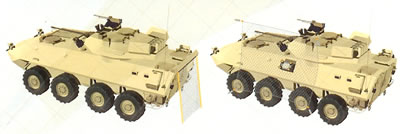

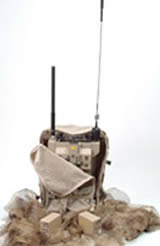
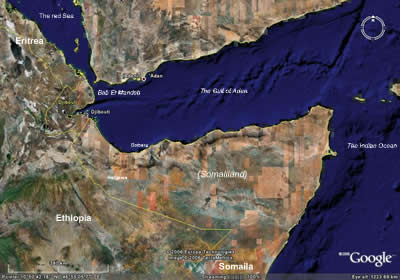

 Local intelligence claim that last Monday’s brutal attack was apparently masterminded by Al-Qaeda militants still on the run after escaping from a Sana’a prison in February last year. One of those still at large is Jamal Ahmad al-Badawi, who was convicted and sentenced to death for the USS Cole blast. Badawi is featured high on the US list of most-wanted terrorists with a five-million-dollar bounty on his head. Another fugitive is Fawzi al-Wajeh, a bodyguard of Osama bin Laden‘s, who was convicted in the 2002 bombing of a French oil tanker and was one of 23 al-Qaeda men to escape from a Yemeni high security prison last year. The US CIA has hunted al Qaeda terrorist leaders in its rare, but widely publicized targeted killing in Yemen. In November 2002, a U.S. Predator drone airplane killed the Yemeni al-Qaeda leader, Abdul Ali al-Harithi, with a missile, the first official attempt by the organization.
Local intelligence claim that last Monday’s brutal attack was apparently masterminded by Al-Qaeda militants still on the run after escaping from a Sana’a prison in February last year. One of those still at large is Jamal Ahmad al-Badawi, who was convicted and sentenced to death for the USS Cole blast. Badawi is featured high on the US list of most-wanted terrorists with a five-million-dollar bounty on his head. Another fugitive is Fawzi al-Wajeh, a bodyguard of Osama bin Laden‘s, who was convicted in the 2002 bombing of a French oil tanker and was one of 23 al-Qaeda men to escape from a Yemeni high security prison last year. The US CIA has hunted al Qaeda terrorist leaders in its rare, but widely publicized targeted killing in Yemen. In November 2002, a U.S. Predator drone airplane killed the Yemeni al-Qaeda leader, Abdul Ali al-Harithi, with a missile, the first official attempt by the organization. President Ali Abdullah Saleh‘s government considers itself to be cooperating with the West in the war against Islamic extremists, but it also has a history of close association with hardline Islamists, including Sheik Abd al-Majid al-Zindani, whom the U.S. has called “a specially designated global terrorist.” Al-Zindani‘s al-Imam University in Sana‘a is believed to finance al-Qaeda and recruit fighters for terrorist attacks. Al Zindani is also often described by anti-terrorist grouped as bin Laden‘s religious mentor.
President Ali Abdullah Saleh‘s government considers itself to be cooperating with the West in the war against Islamic extremists, but it also has a history of close association with hardline Islamists, including Sheik Abd al-Majid al-Zindani, whom the U.S. has called “a specially designated global terrorist.” Al-Zindani‘s al-Imam University in Sana‘a is believed to finance al-Qaeda and recruit fighters for terrorist attacks. Al Zindani is also often described by anti-terrorist grouped as bin Laden‘s religious mentor. The 2004 Saada uprising had a more traditional character than most of the modern Islamist militant organizations, which are led largely by military veterans and professionals such as doctors and engineers. The three month mountain revolt was led by a Zaidi religious figure, Hussein al-Houthi, leading a student movement committed to Islamic reform, the Shabab al-Mu’mineen, (“The Young Believers”). For some time, Al-Houthi was even a member of Yemen’s parliament (1993-97). Unconnected to the mainstream of Sunni radicalism, al-Houthi proved a fierce opponent of al-Qaeda, which had cemented its anti-Shi’ite reputation by participating in the 2001 Taliban’s massacres of Afghan Shi’ites. Like the Sunni militants, however, al-Houthi’s most scathing invective was reserved against America and Israel.
The 2004 Saada uprising had a more traditional character than most of the modern Islamist militant organizations, which are led largely by military veterans and professionals such as doctors and engineers. The three month mountain revolt was led by a Zaidi religious figure, Hussein al-Houthi, leading a student movement committed to Islamic reform, the Shabab al-Mu’mineen, (“The Young Believers”). For some time, Al-Houthi was even a member of Yemen’s parliament (1993-97). Unconnected to the mainstream of Sunni radicalism, al-Houthi proved a fierce opponent of al-Qaeda, which had cemented its anti-Shi’ite reputation by participating in the 2001 Taliban’s massacres of Afghan Shi’ites. Like the Sunni militants, however, al-Houthi’s most scathing invective was reserved against America and Israel.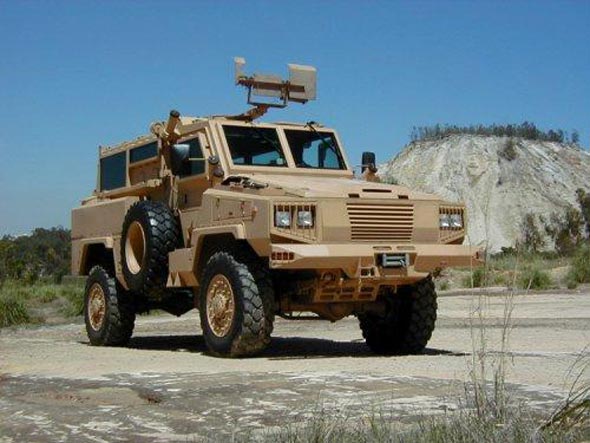
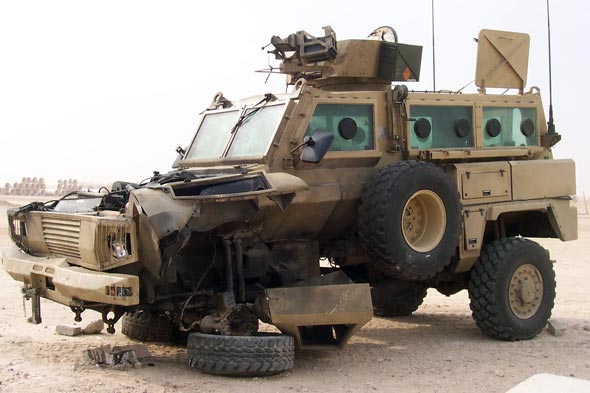
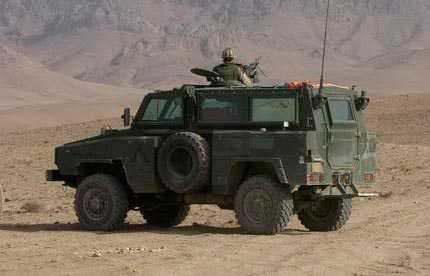

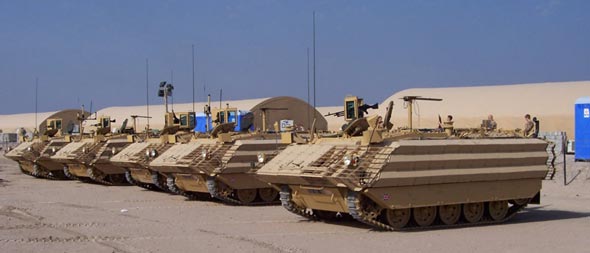



 The cooperation is based on the extensive experience IAI has gathered with unmanned vehicles and loitering weapons, especially the
The cooperation is based on the extensive experience IAI has gathered with unmanned vehicles and loitering weapons, especially the 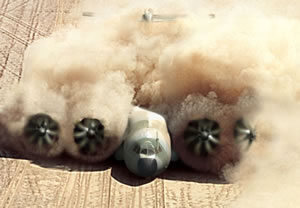

 It is outfitted with its fly-by-wire Aerial Refueling Boom System (ARBS), along with two underwing hose and drogue refueling pods. This aircraft recently completed ground testing to validate installation of its refueling equipment package and has begun flight evaluation program, leading to its eventual delivery to Australia. The KC-30B combined aerial refueling system will enable the RAAF to support its own fighters, strategic airlifters and AWACS assets, while offering full aerial refueling compatibility with other U.S., NATO and allied military aircraft. Its configuration is similar to the Northrop Grumman KC-30 Tanker, which is being proposed for the U.S. Air Force KC-135 tanker replacement program.
It is outfitted with its fly-by-wire Aerial Refueling Boom System (ARBS), along with two underwing hose and drogue refueling pods. This aircraft recently completed ground testing to validate installation of its refueling equipment package and has begun flight evaluation program, leading to its eventual delivery to Australia. The KC-30B combined aerial refueling system will enable the RAAF to support its own fighters, strategic airlifters and AWACS assets, while offering full aerial refueling compatibility with other U.S., NATO and allied military aircraft. Its configuration is similar to the Northrop Grumman KC-30 Tanker, which is being proposed for the U.S. Air Force KC-135 tanker replacement program.
 In contrast to Boeing’s Globemaster III demise,
In contrast to Boeing’s Globemaster III demise, 











